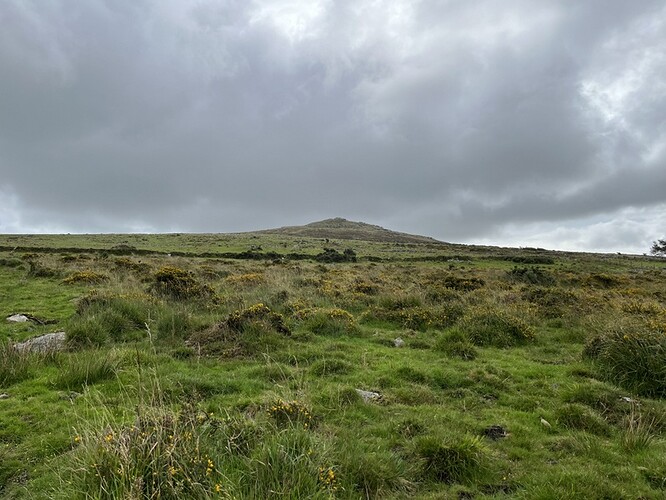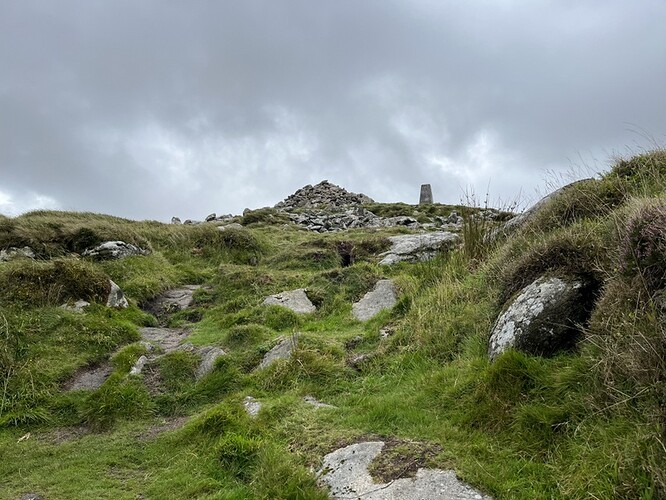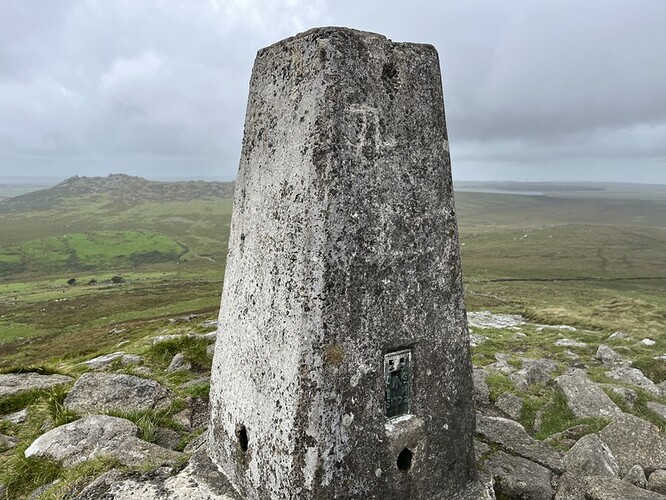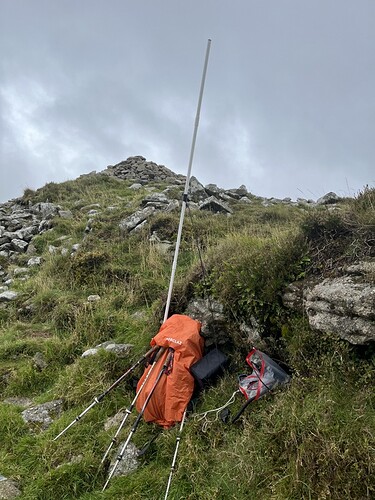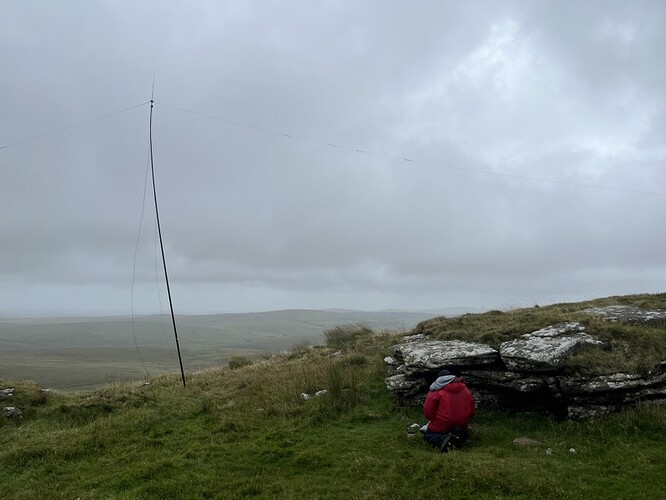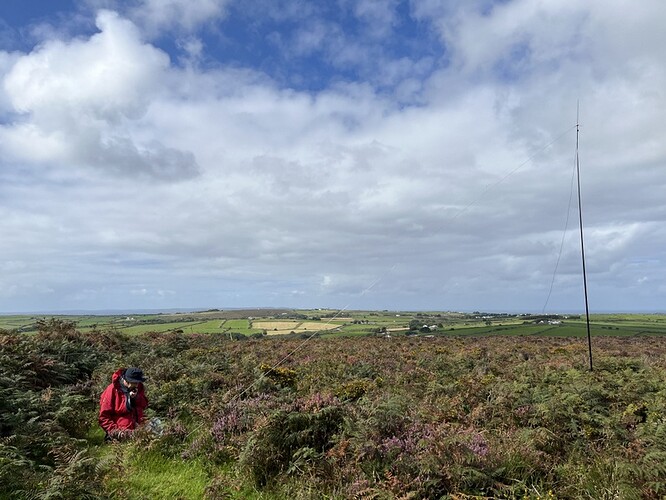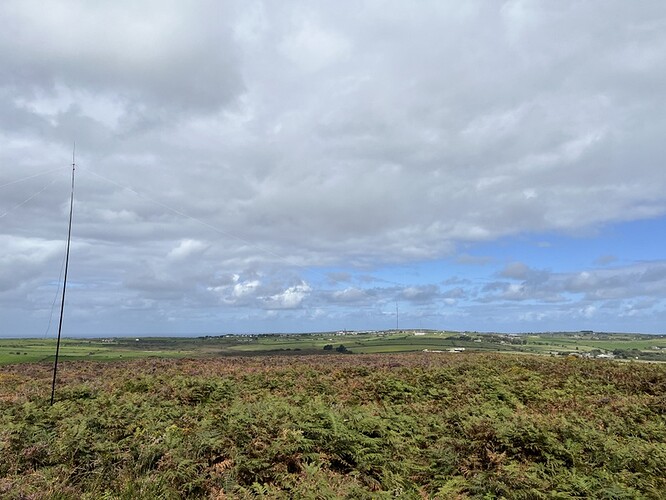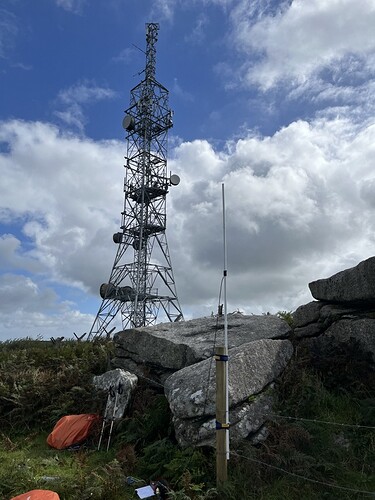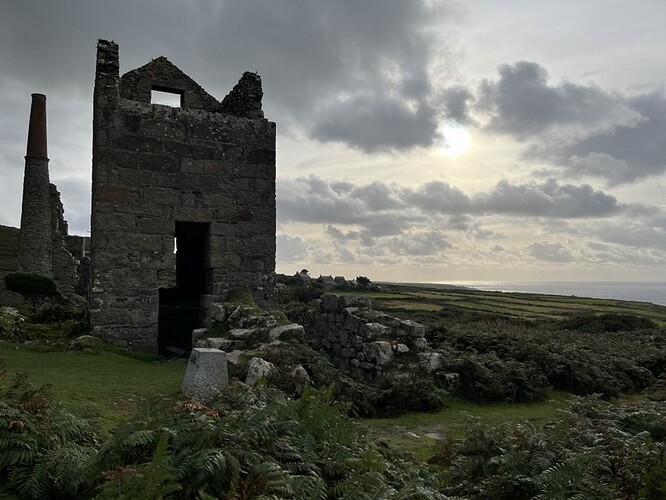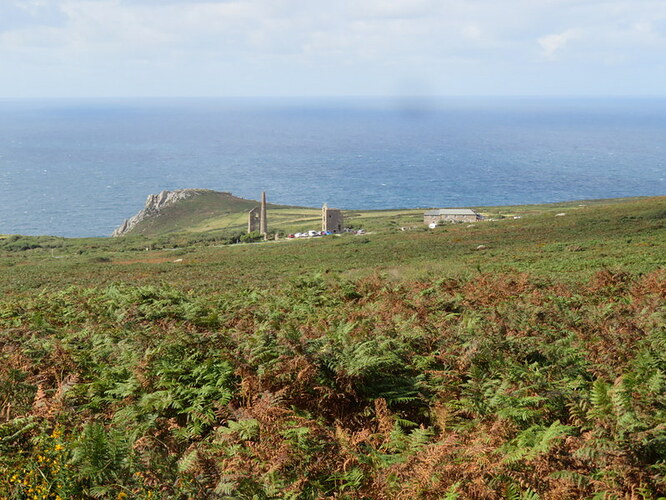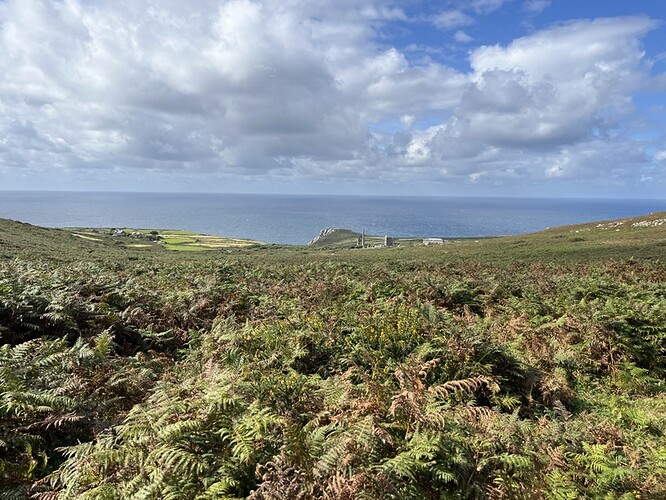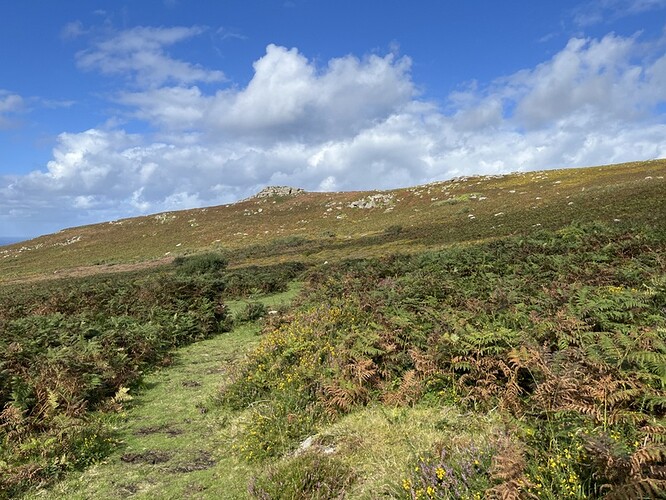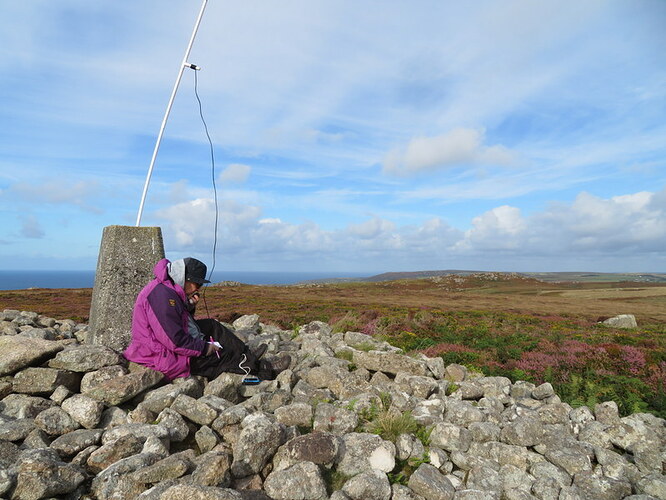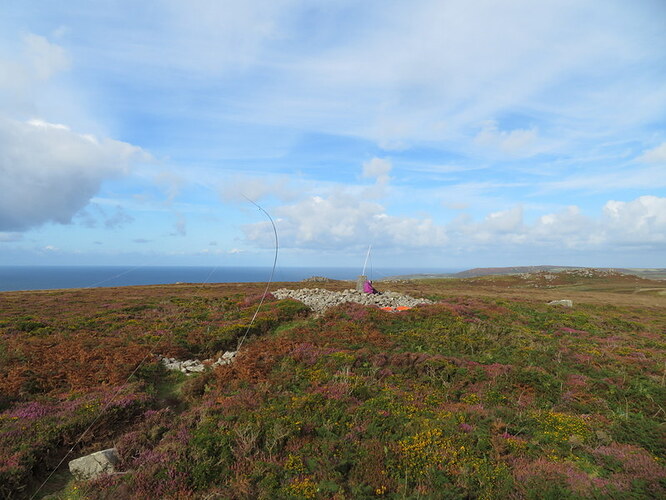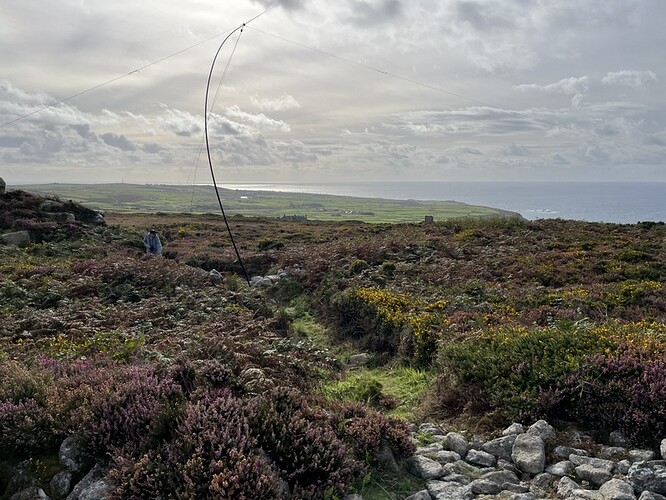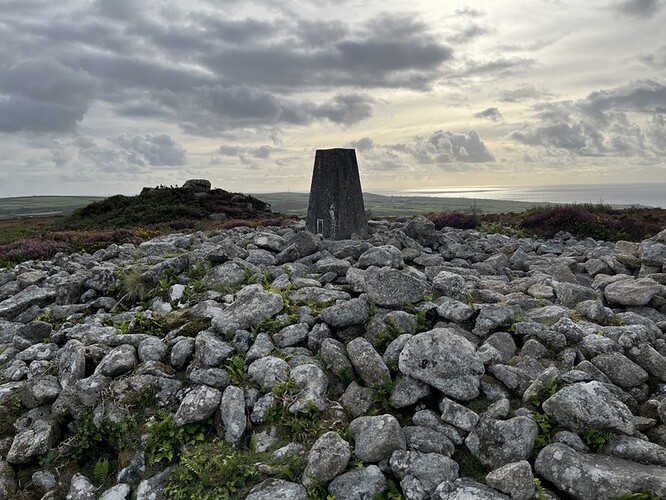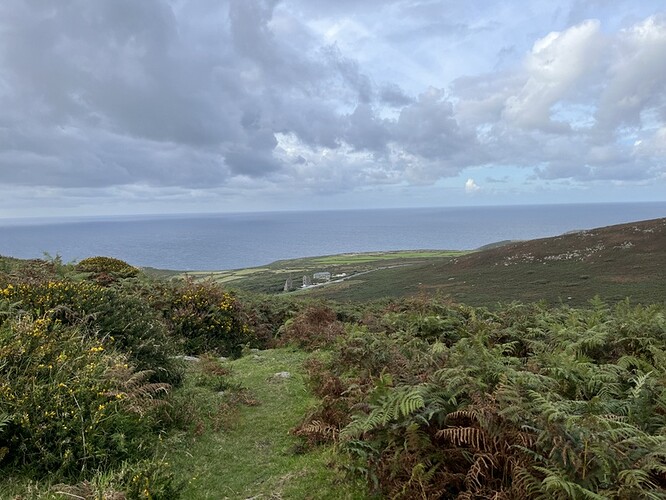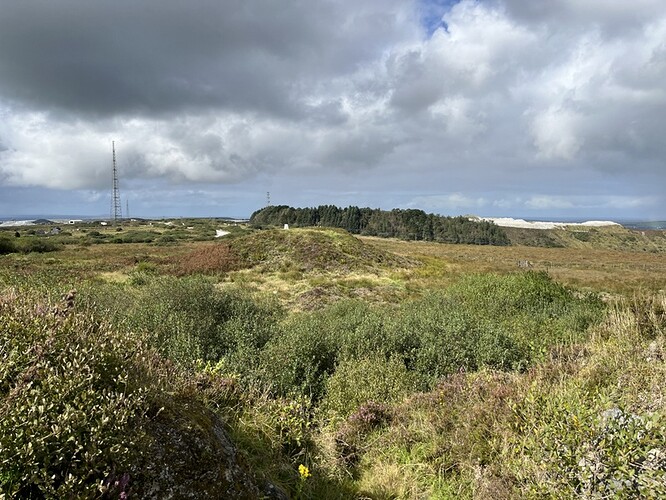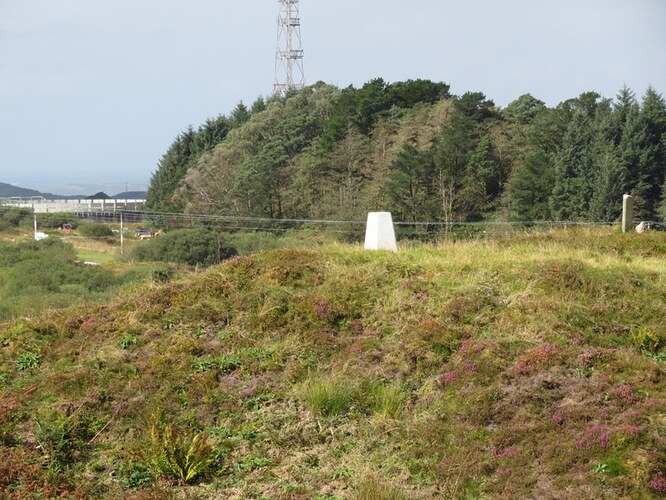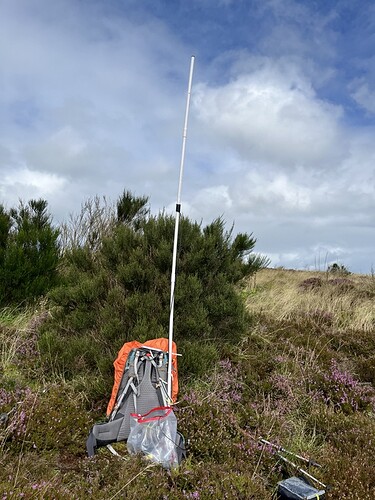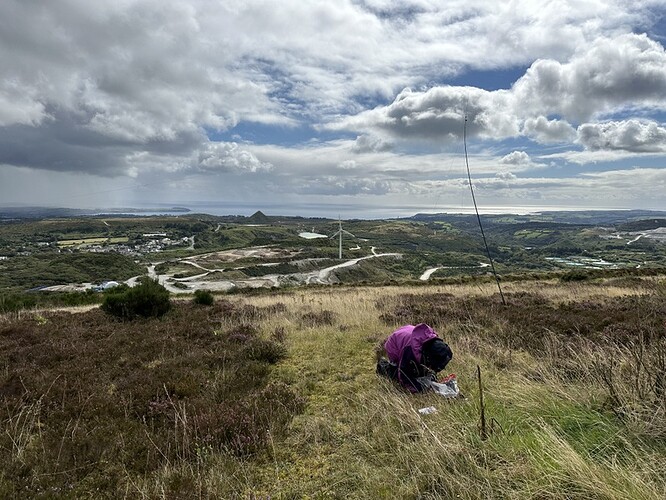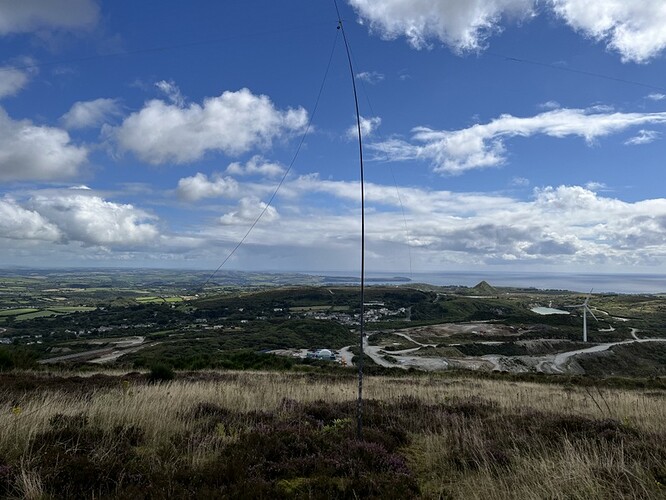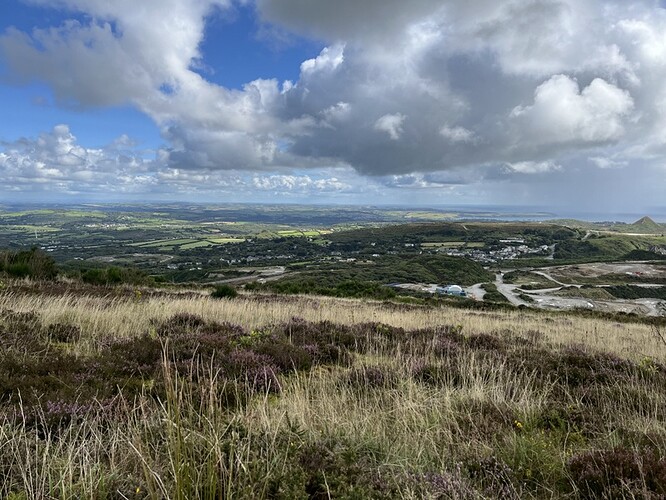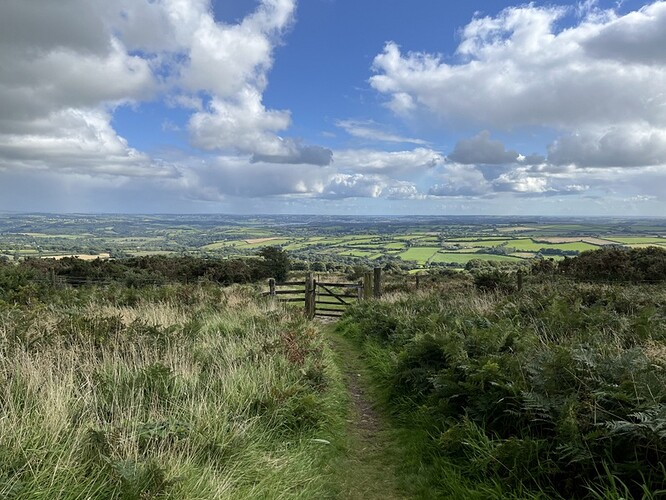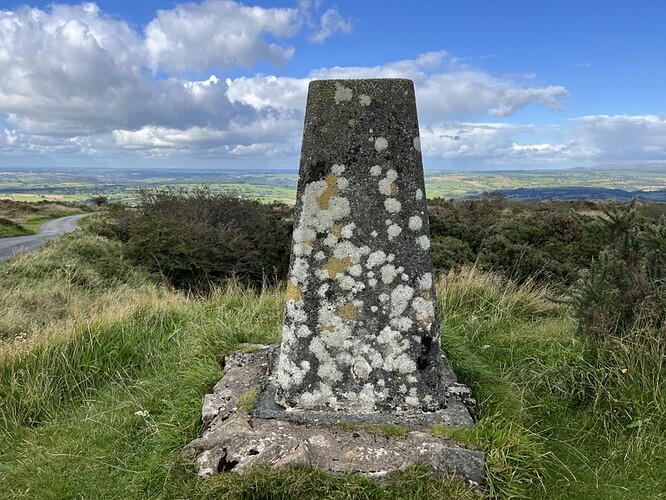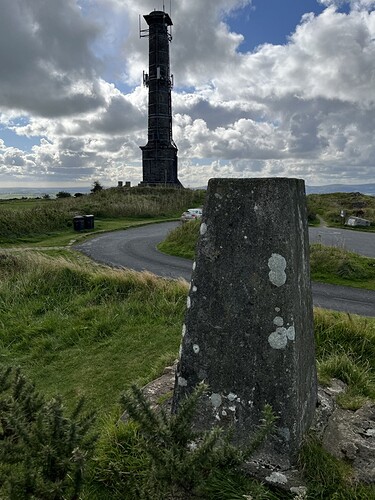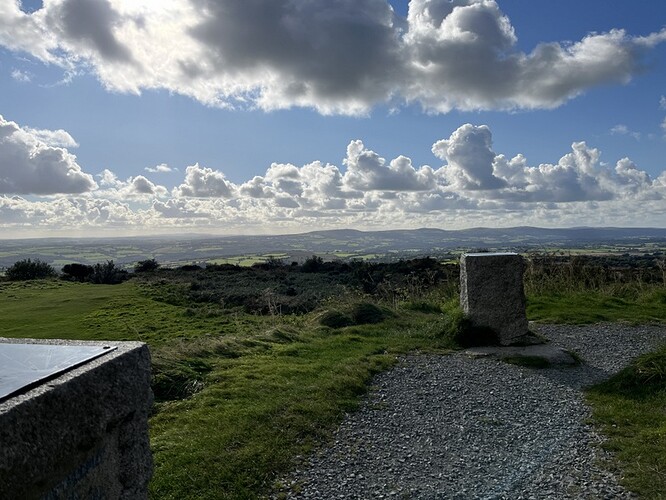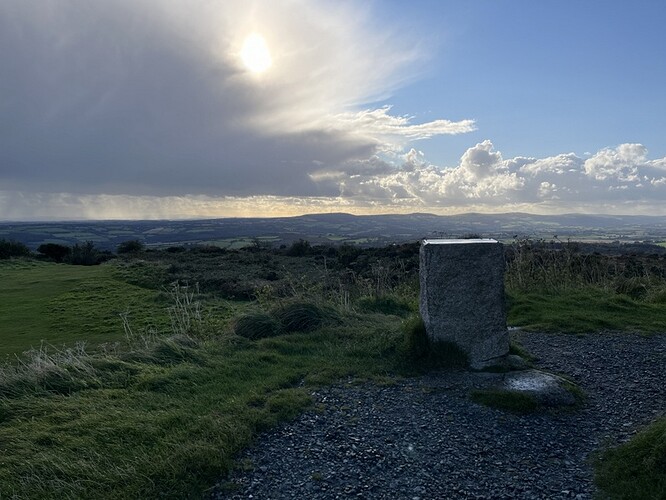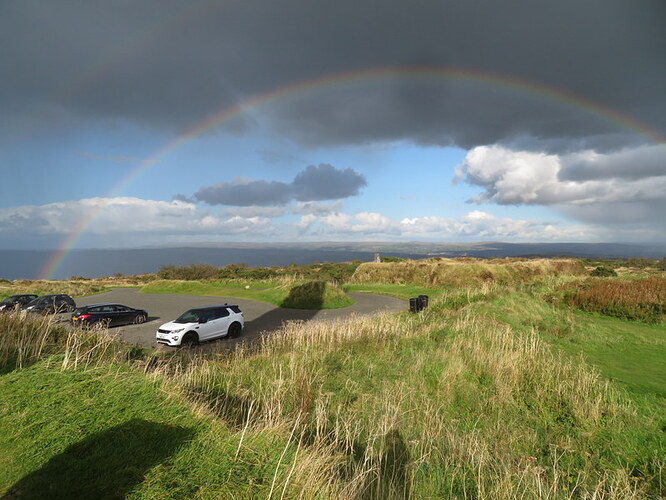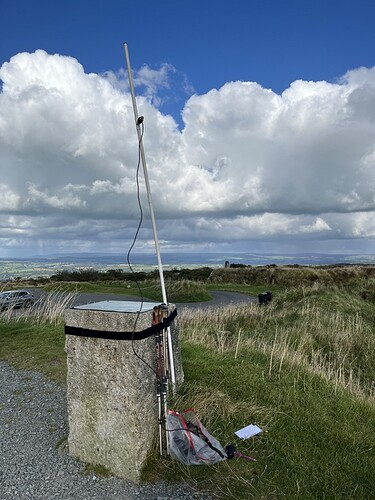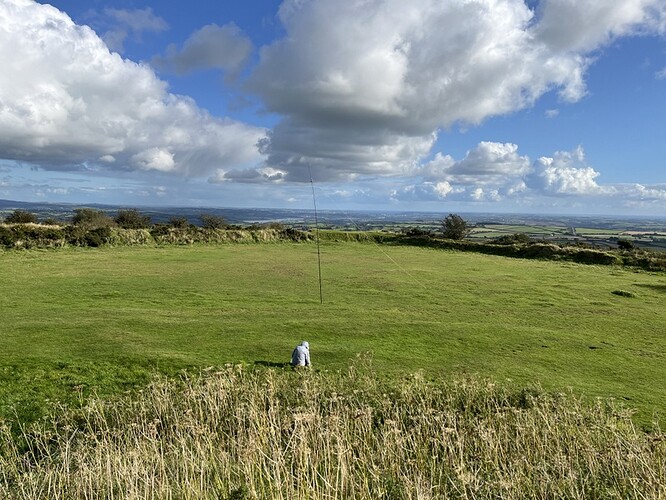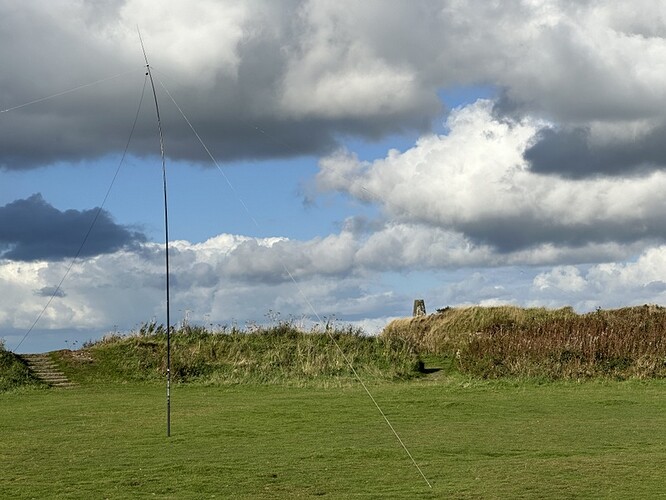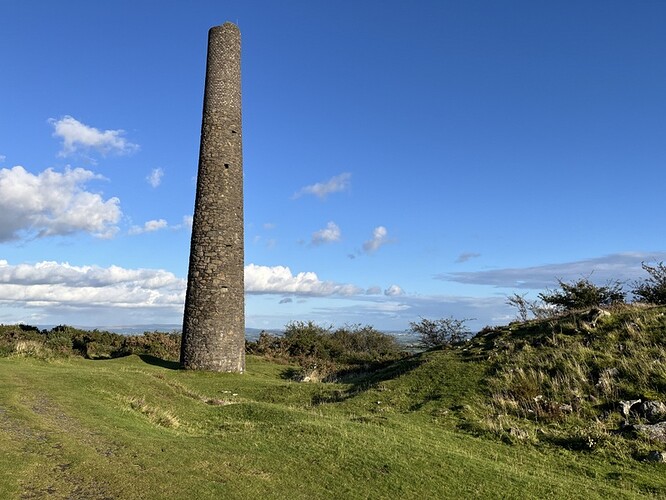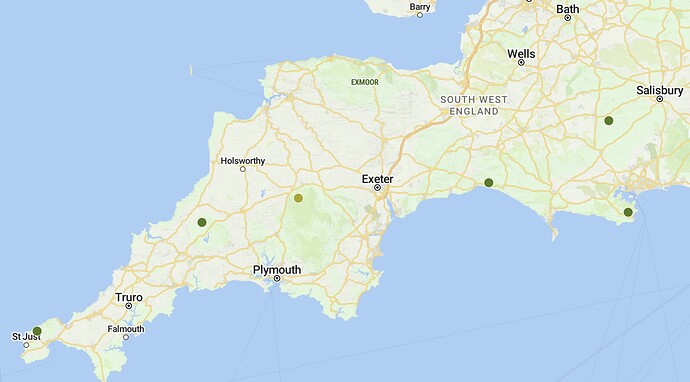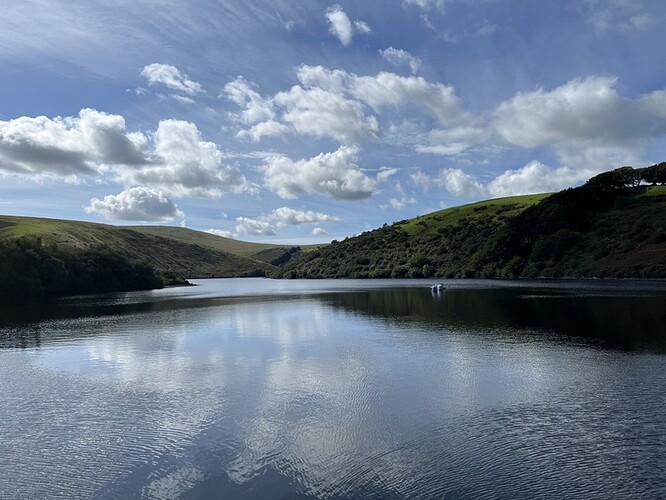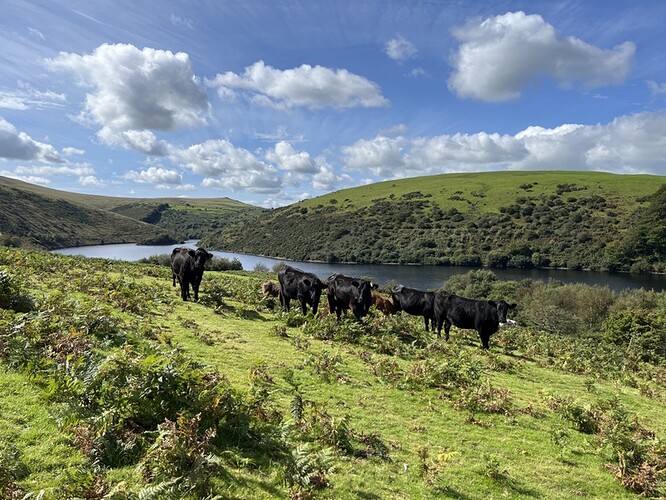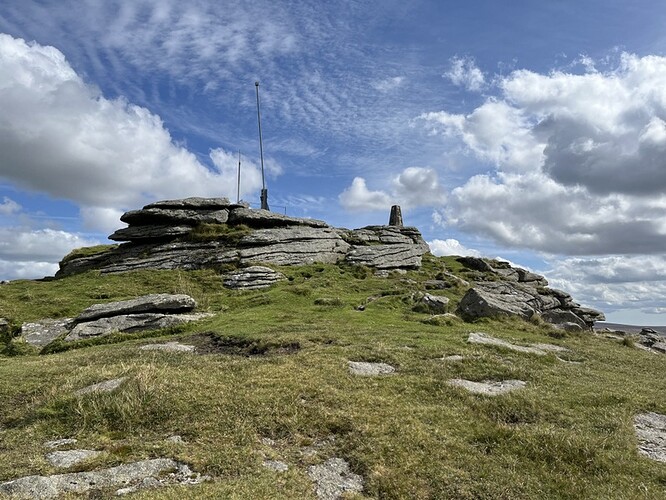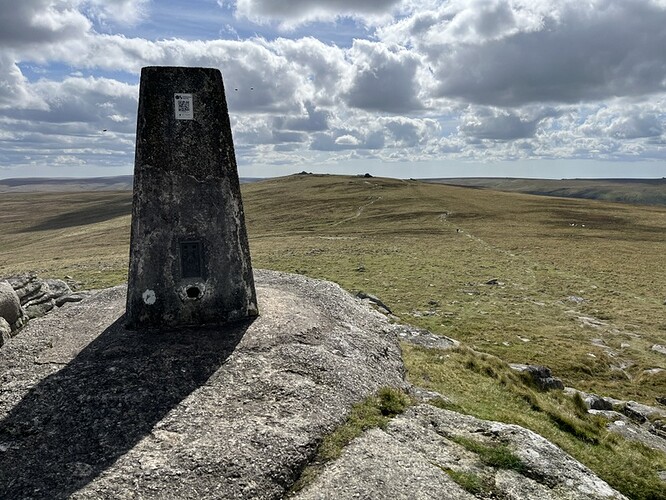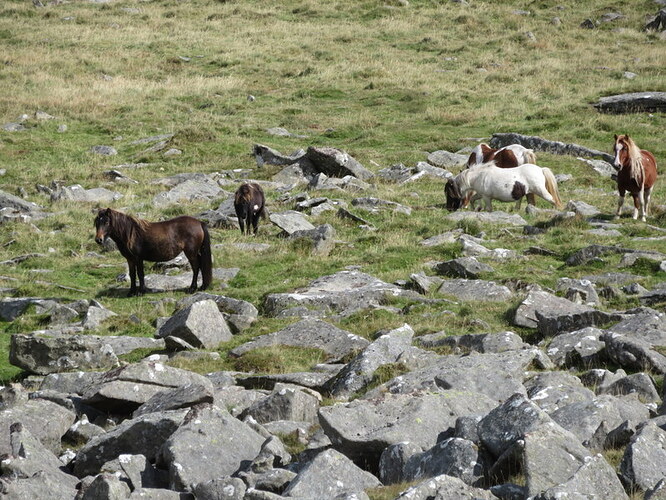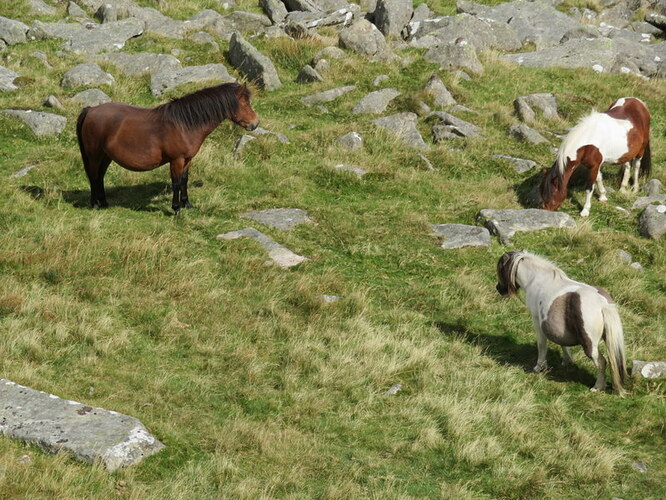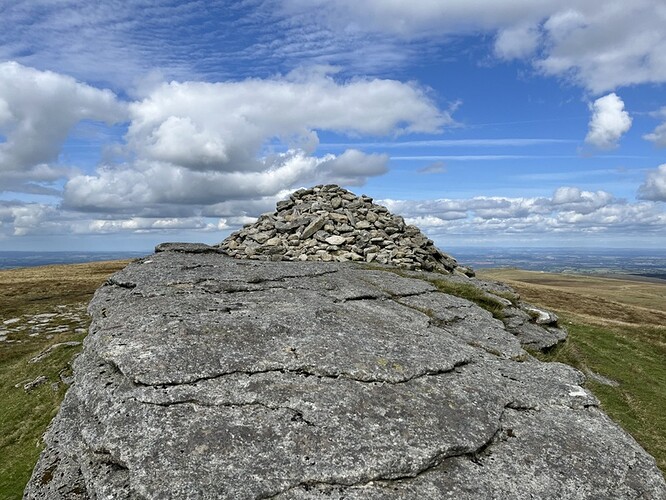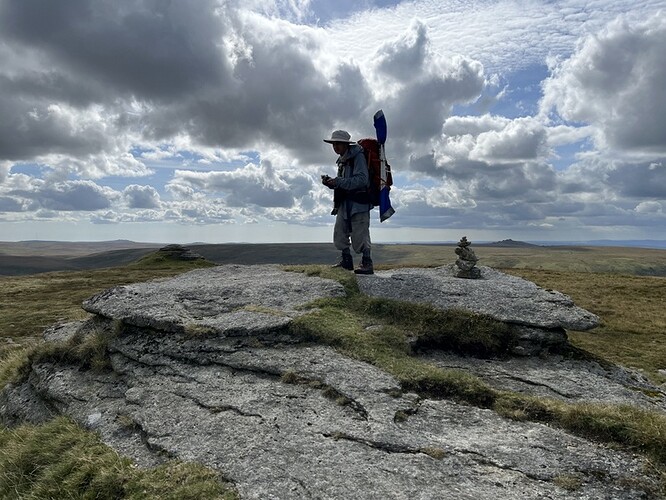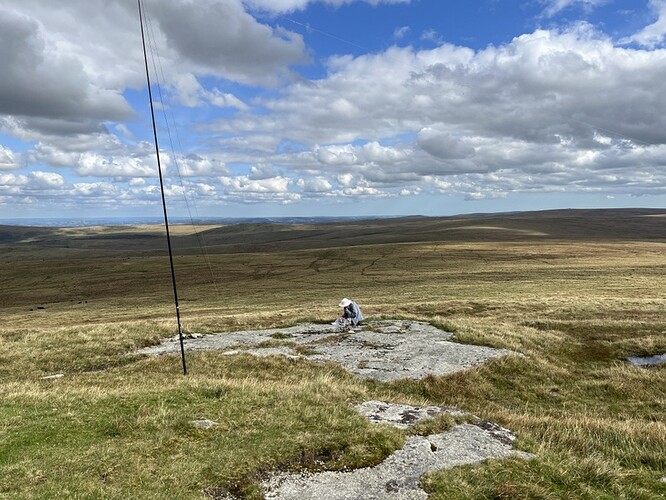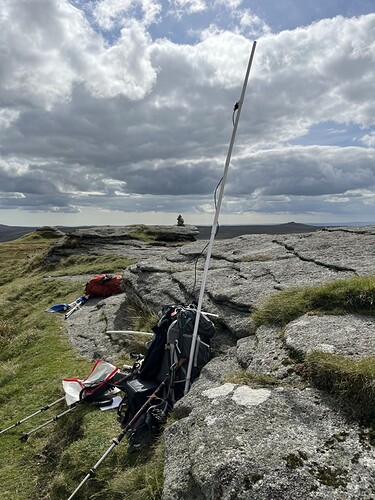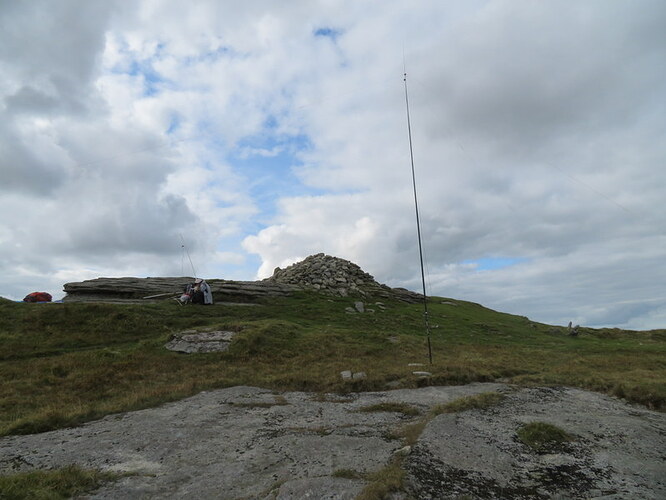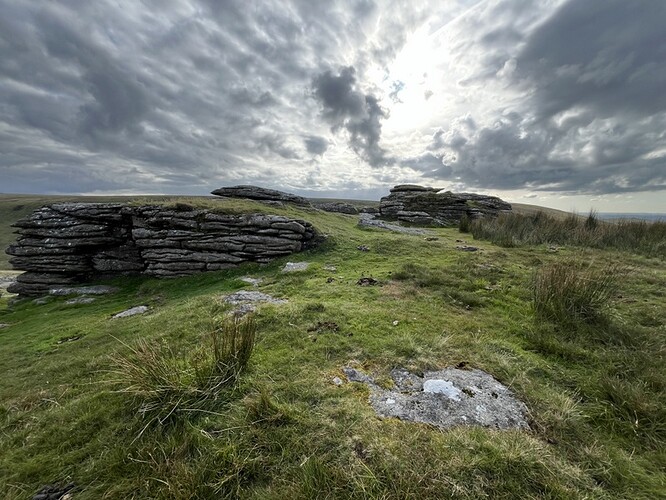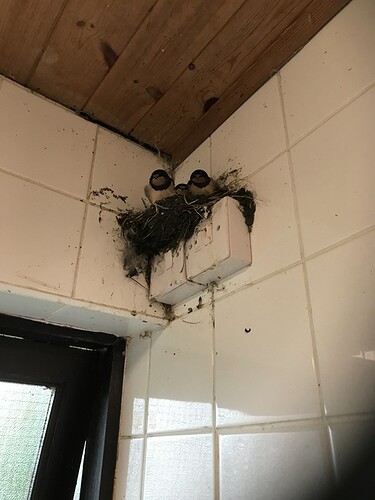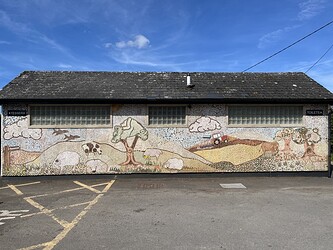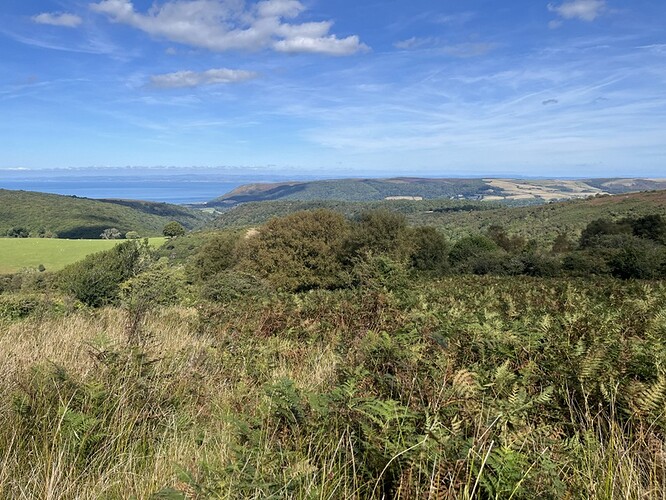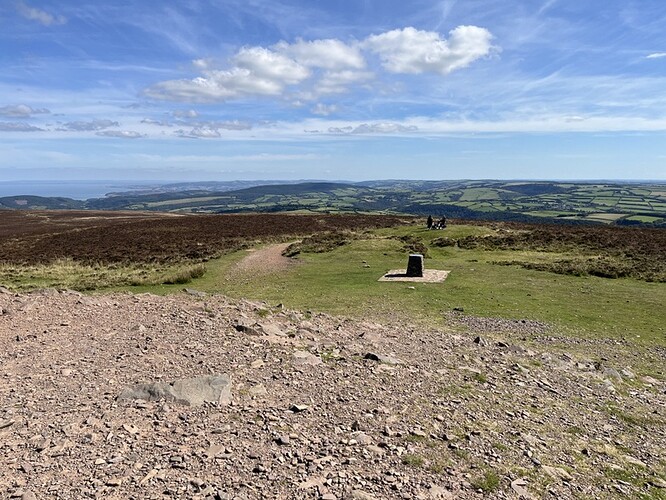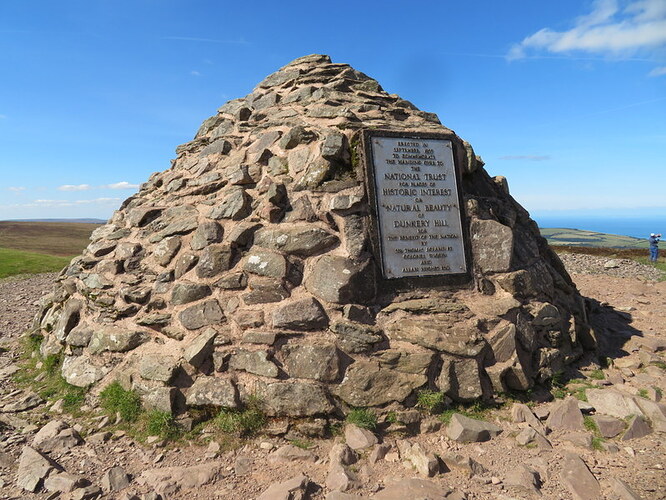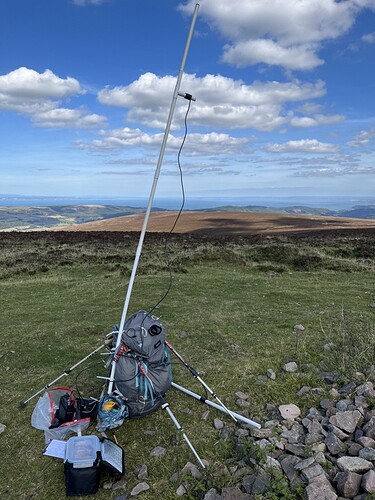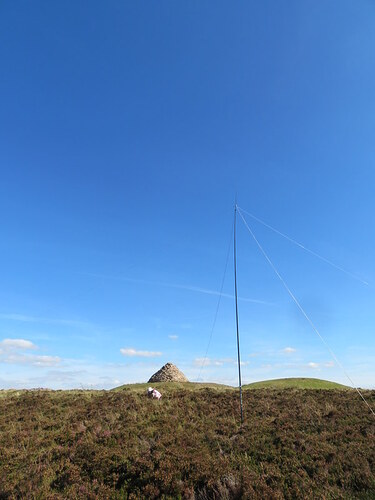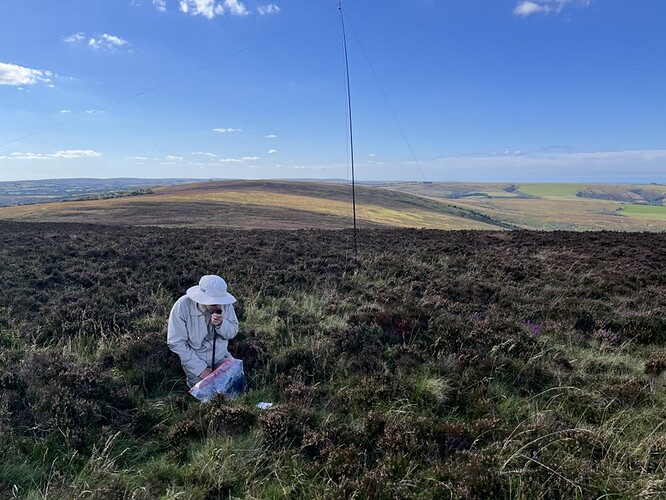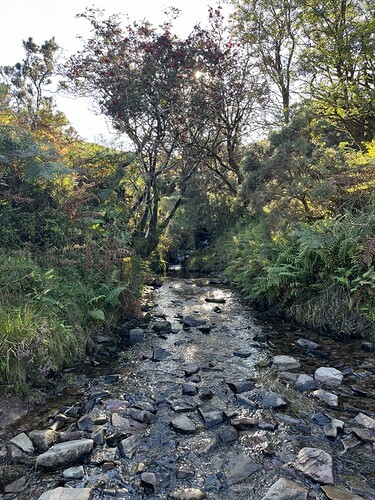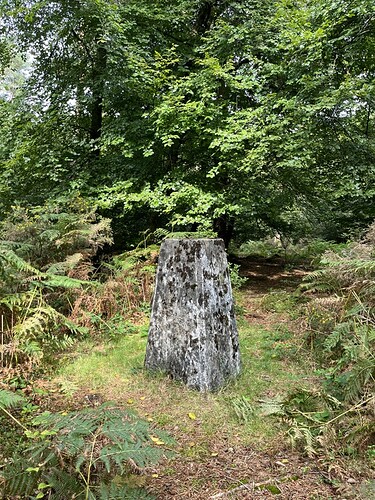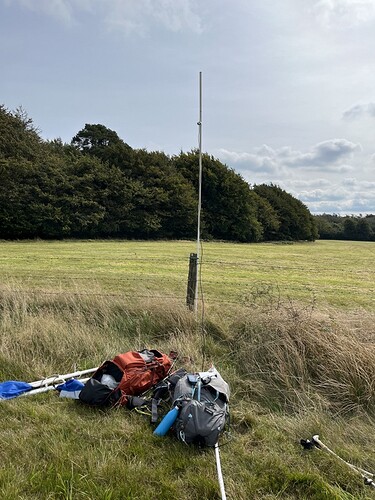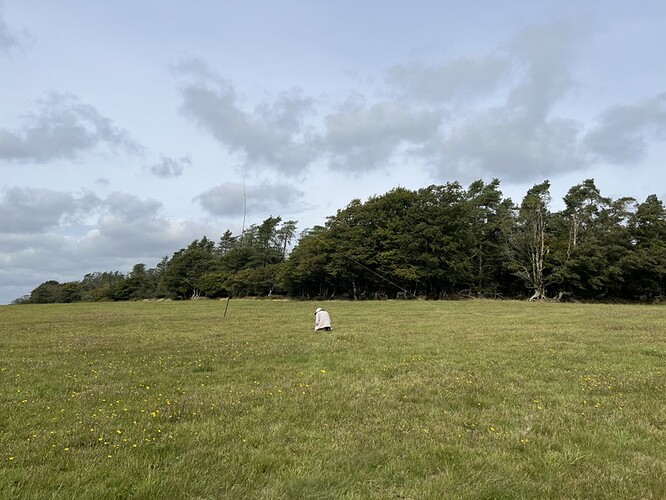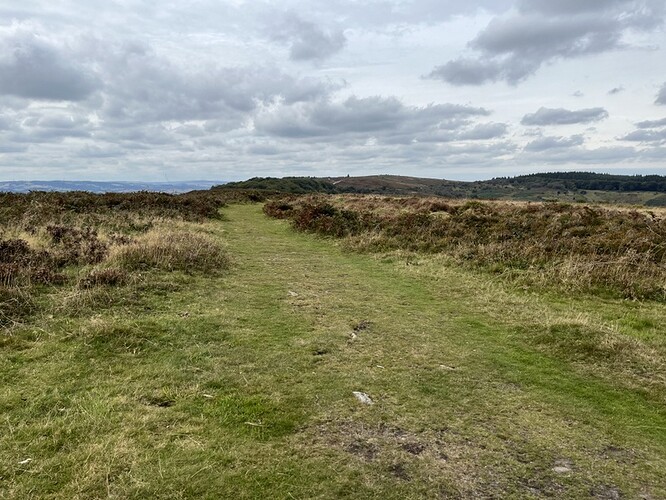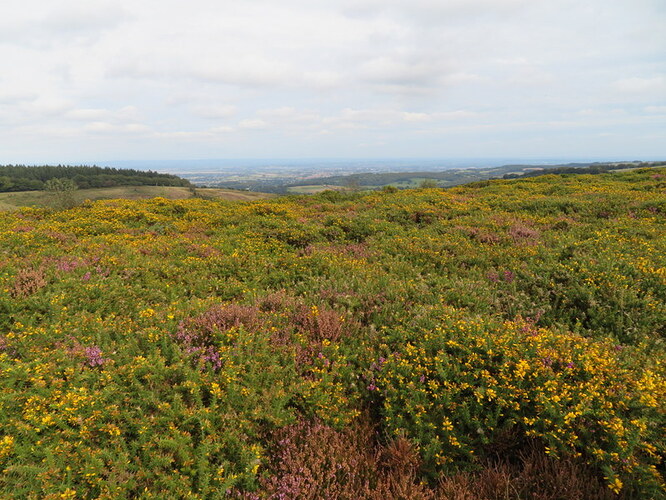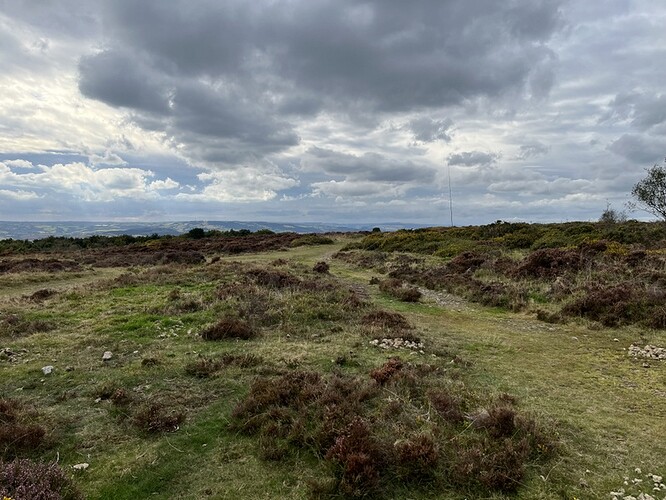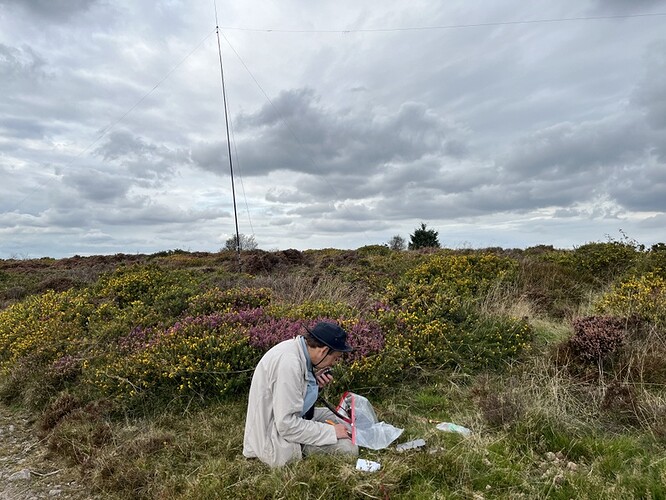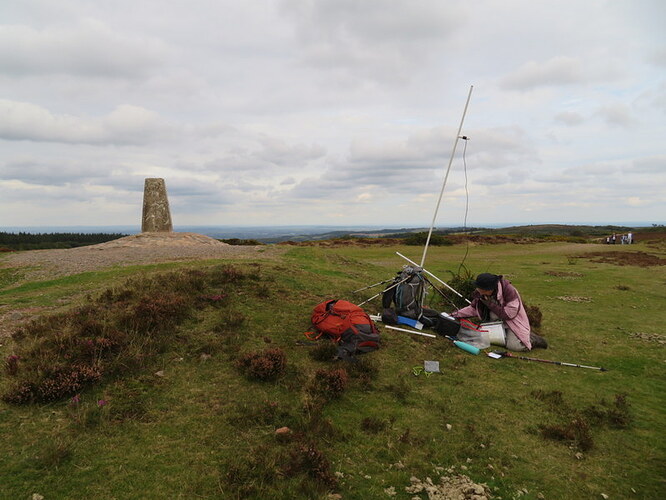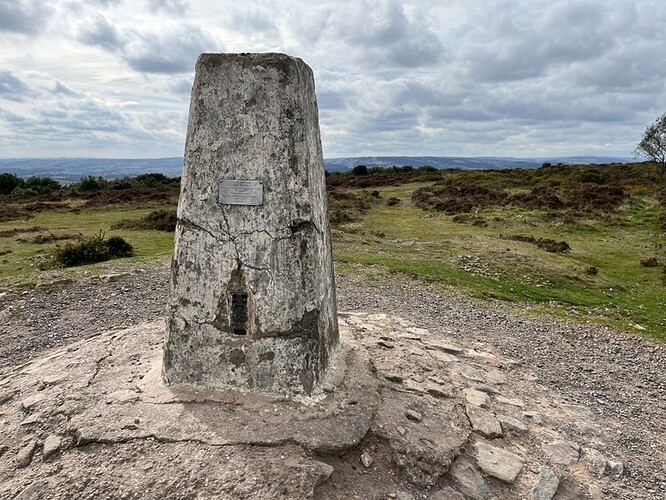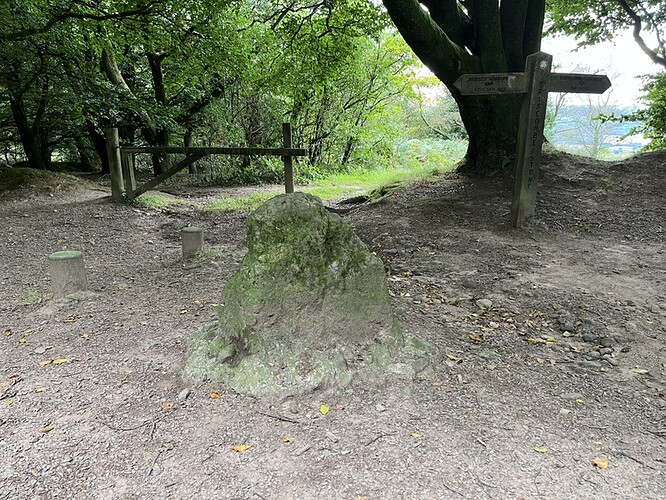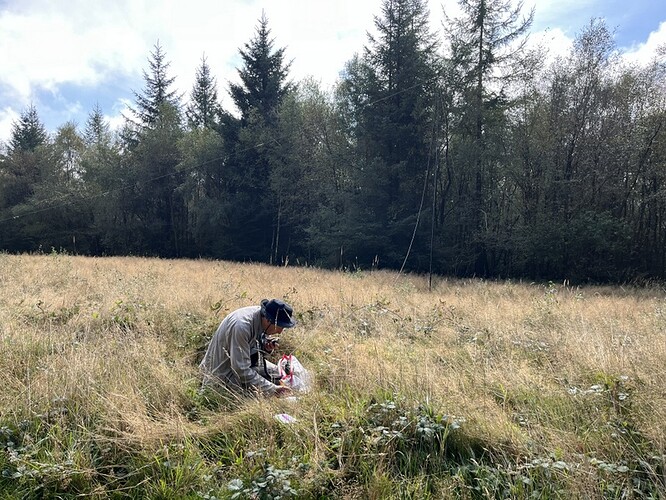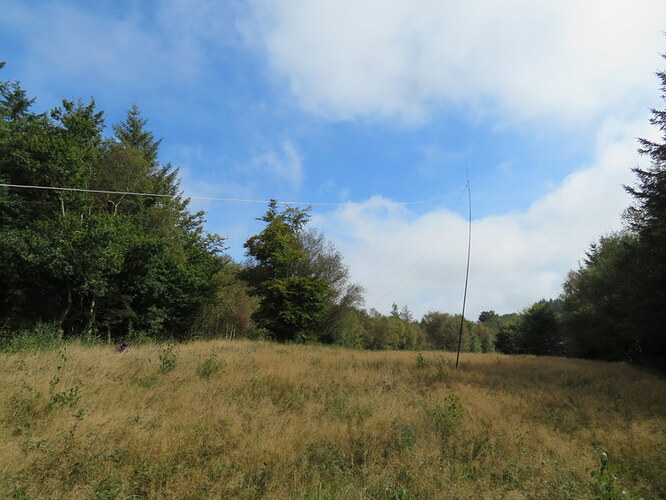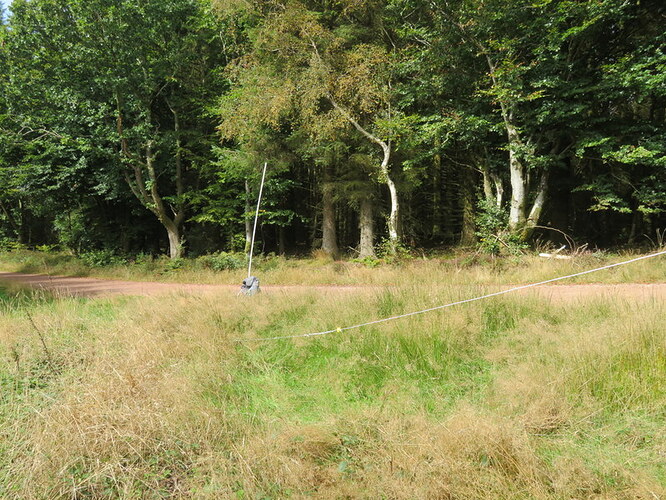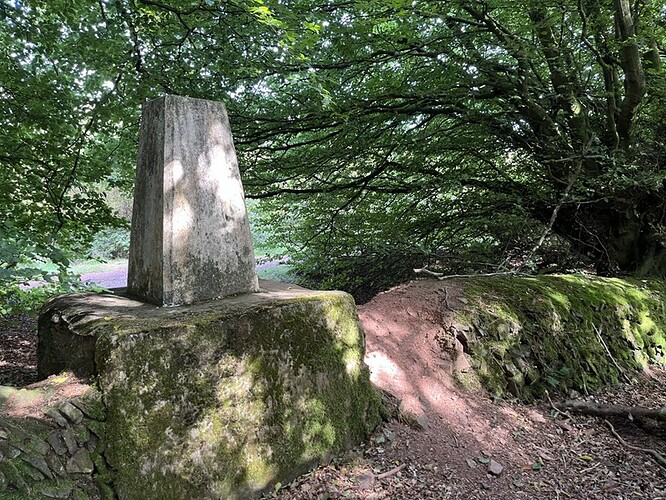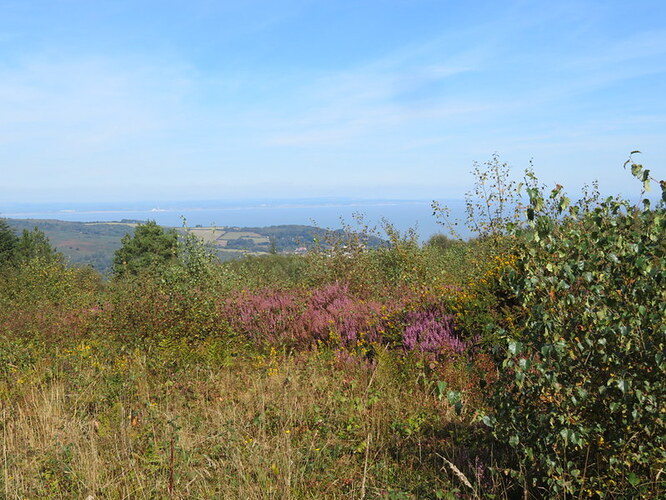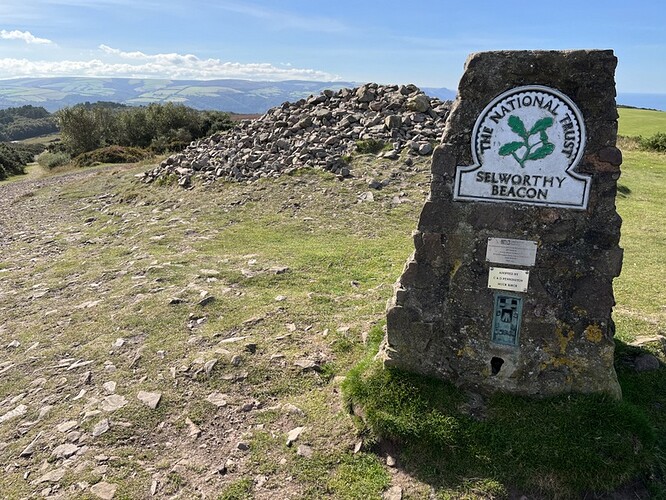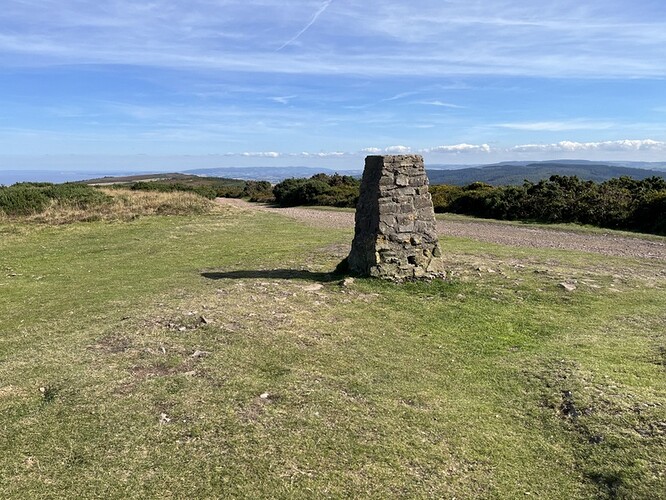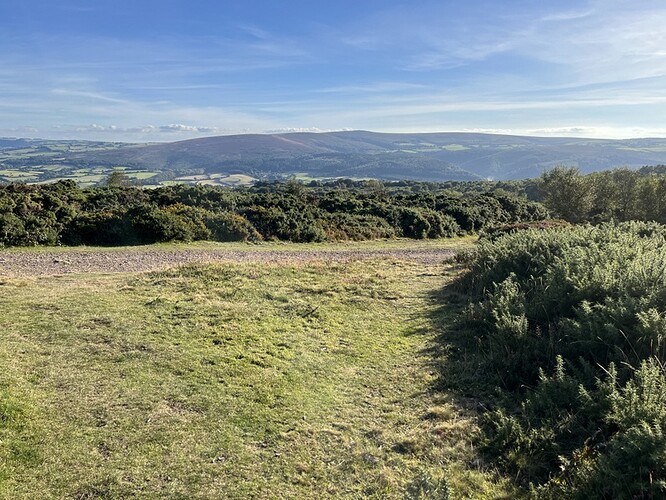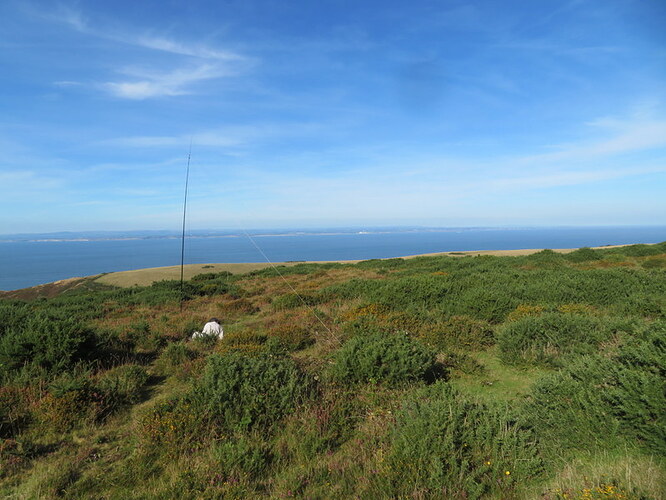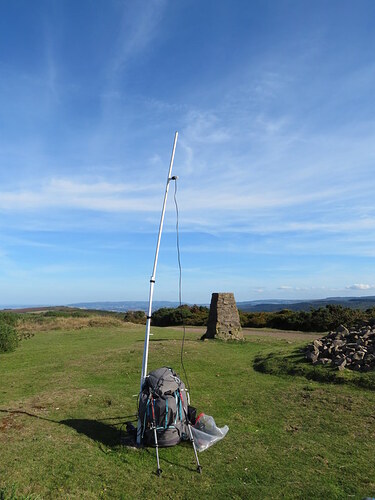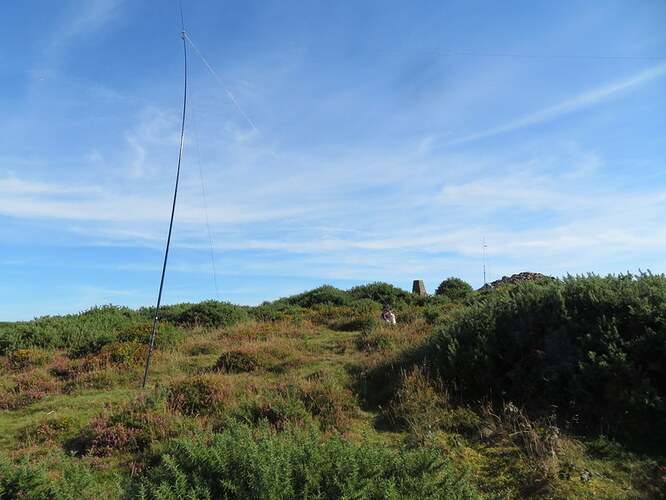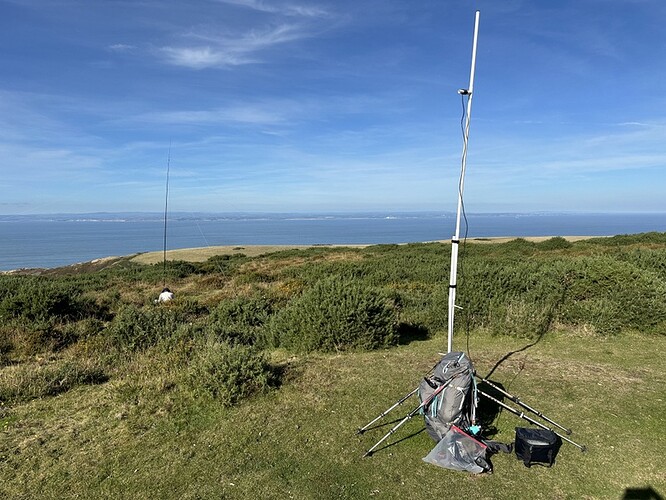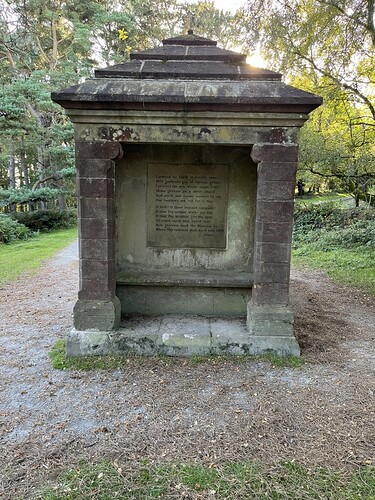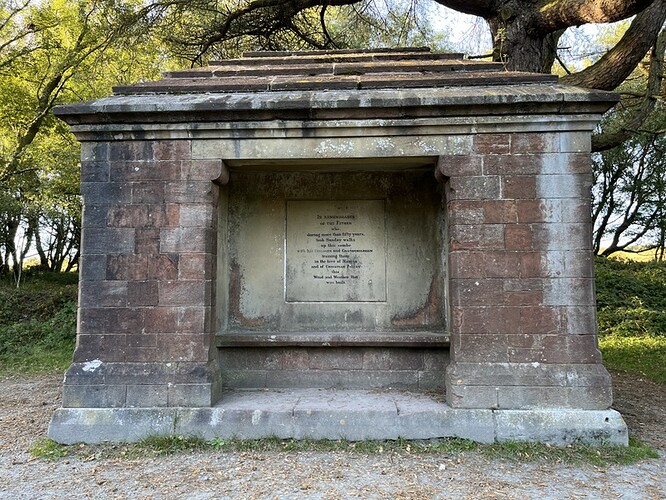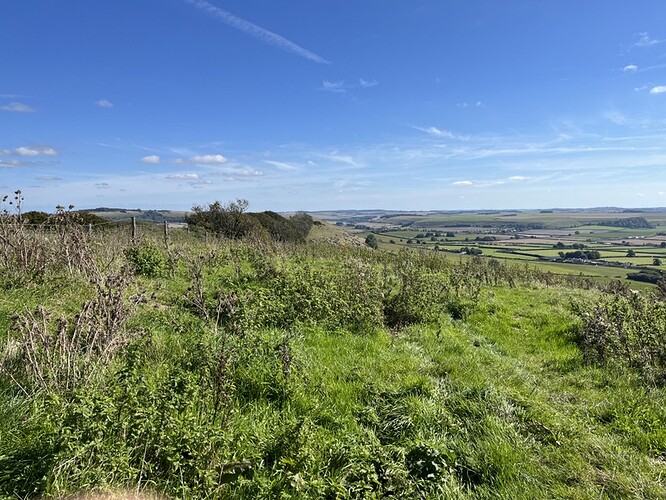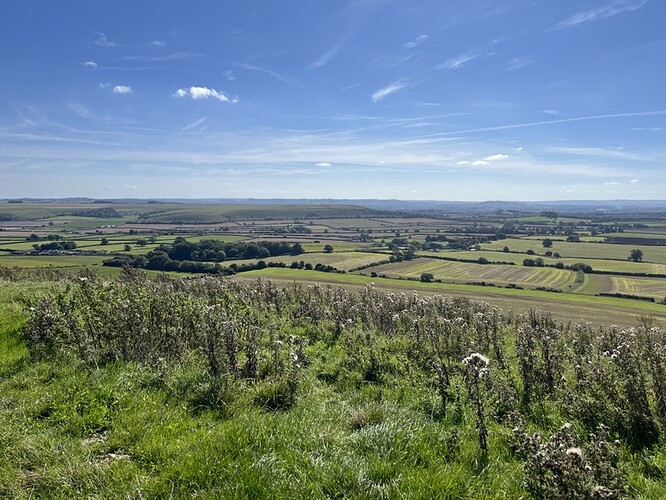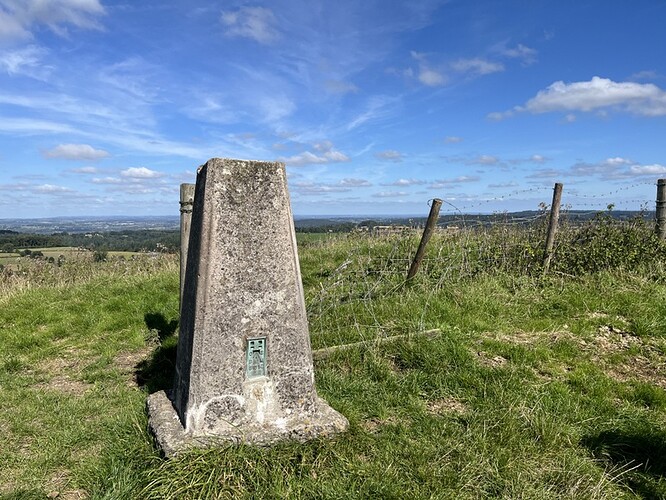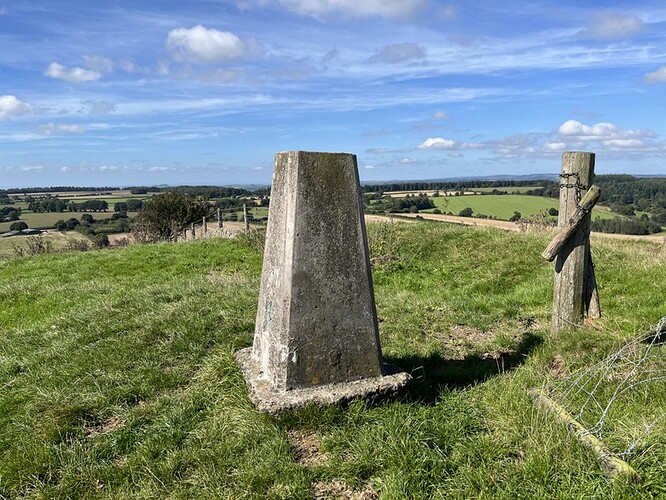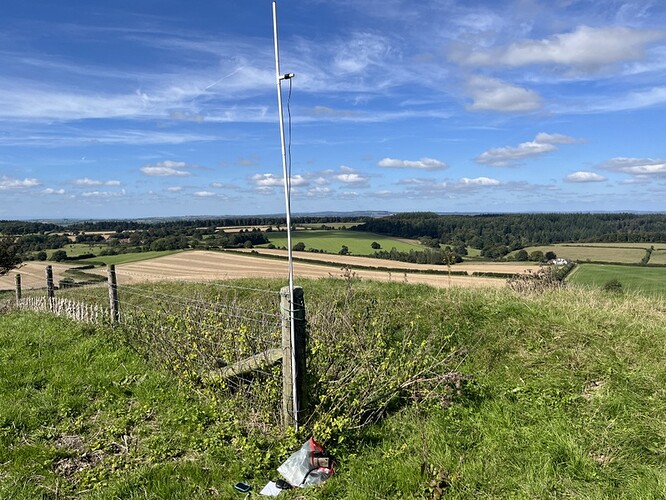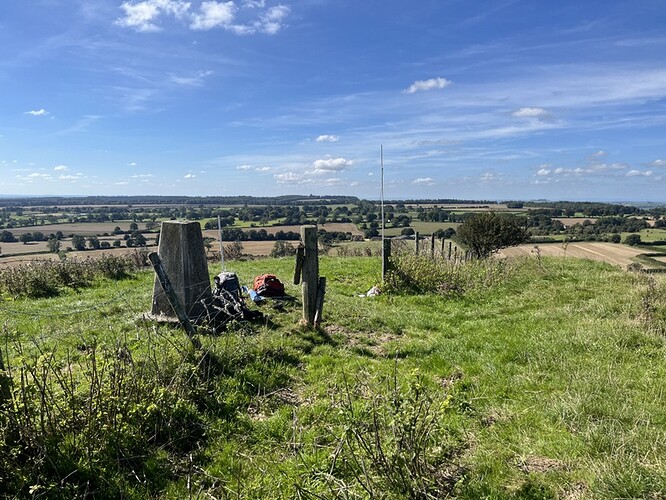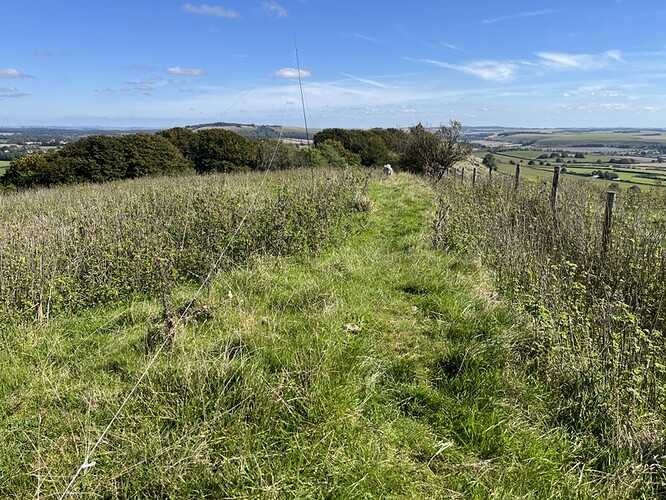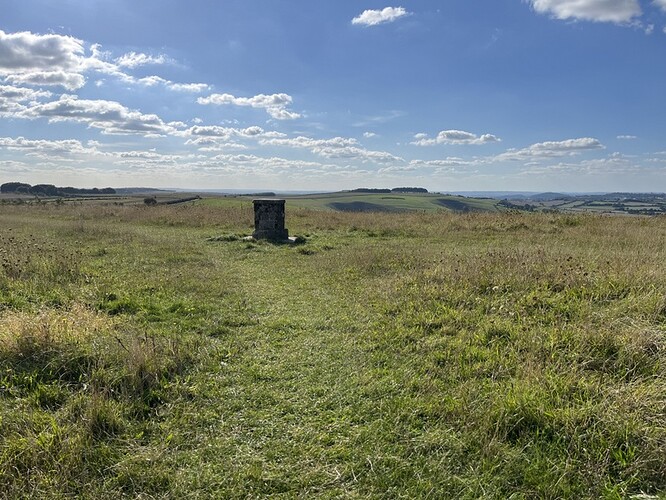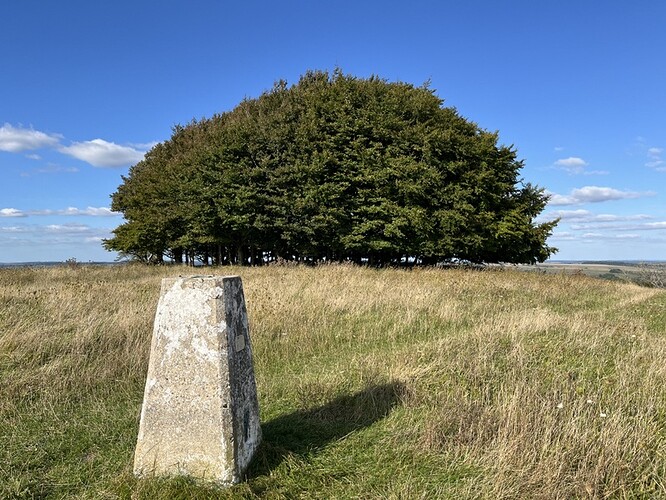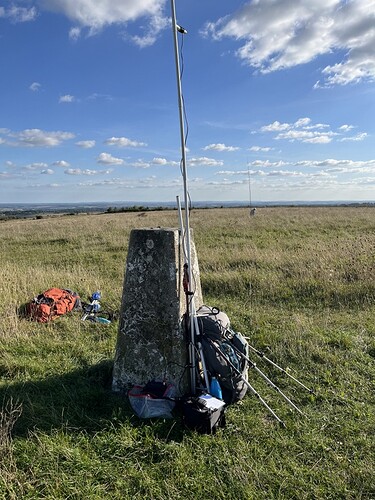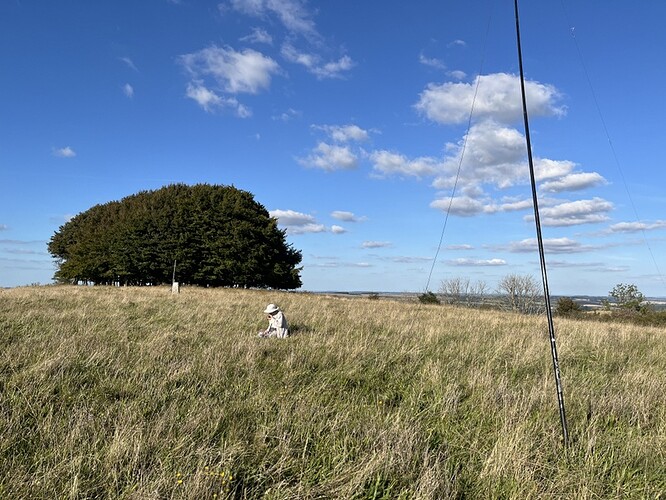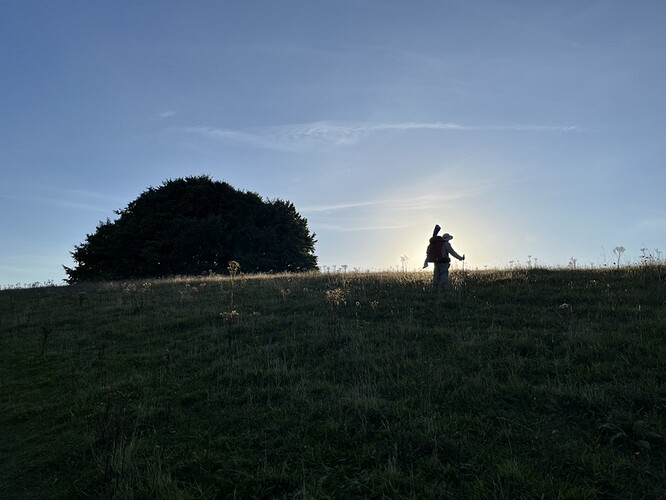It was good to work you too, with especial thanks for the S2S from Staple Hill. We may not be down in that area for a while (we have a preference for uniques and have now done all the G/SC, but it’s a lovely area with lots to do besides radio so may be back).
Report on the activations that day below.
15 September 2024: Sunday - G/SC-004 Staple Hill and G/SC-002 Will’s Neck
We woke to a misty morning, getting some atmospheric sunrise views through the east facing patio doors of the holiday cottage. The forecast was for a generally dry day once the mist cleared but with a moderate amount of cloud, and possible light rain later. We couldn’t face the thought of driving the A39 again to do the two other summits near Minehead, so decided to do the two summits closest to the holiday cottage, where the main driving challenge was getting through Taunton.
Our first target was Staple Hill G/SC-004 in the Blackdown Hills. We needed to drop the car antenna to get into the forestry parking, which was quite busy on a Sunday. The car park is in the activation area, but we wanted a walk and to be out of the way of people, so went in search of the trig point. It took us some time to find it well hidden in the trees. That done we retreated to the field we had spotted where the bridleway leaves the forested area. There were convenient fence posts to support the VHF antenna and plenty of space to spread out HF.
Staple Hill Trig point
Staple Hill VHF setup
Staple Hill HF setup
Caroline struggled on VHF getting just one contact in 20 minutes calling. During that time Martyn qualified the hill with a quick run of 4 60m contacts, but that was all on 60m. A move to 40m brought a S2S for both of us. Finally Caroline managed a difficult 2nd 2m contact. In order to qualify the hill, Caroline moved to 40m for a run of 15 contacts. Martyn had eaten his lunch by the time 40m ran dry, so he took over HF on 20m while Caroline ate lunch with intermittent calls on 2m which finally got Caroline 2 more contacts, so the hill was qualified on 2m FM. 20m yielded 5 calls, 2 of them S2S for Martyn, only one of which also manged to work Caroline. Despite attempts, no 70cms contacts were made.
Having packed up, we were just about to leave the field when Caroline’s handheld sprang into life, enabling us both to work Matt M7MFS who was just setting up for his Sunday afternoon net. This was to prove a boon on our next summit. Caroline had planned a longer walk back to the car which would have taken us out of the activation area, but the forecast hinted at late afternoon rain, so we decided to go straight back to get to the next summit, Will’s Neck G/SC-002.
Back through Taunton we made our way to the Lydeard Hill Car Park, which was fairly full. We took the path going over the top of Lydeard Hill, getting nice views. We heard Richard @M1HAX calling from G/WB-013 Garway Hill, and managed to work him for the chaser points. We were still some way off the activation area of Will’s Neck for the S2S, but pushed on in the hope we could get the S2S before Richard had to leave. Catching our breath where we had crossed the 365 contour and were well into the activation area, we heard Richard working someone and saying his battery was dying, and then silence and no response to our calls  . A shame because Caroline also wanted to thank him for the route details he publishes, which we had used for some of our activations.
. A shame because Caroline also wanted to thank him for the route details he publishes, which we had used for some of our activations.
Lydeard Hill Ascending Wills Neck (trig visible in distance)
Ascending Wills Neck
We continued to the summit at a more relaxed pace. It was busy, but not as busy as Dunkery. Caroline set up a short distance from the trig point, while Martyn was some way away on the edge of the heather to avoid the HF antenna crossing paths.
Will’s Neck: HF antenna in distance away from trig
Will’s Neck: HF Setup
Will’s Neck: VHF /UHF Setup
Will’s Neck: trig
VHF/UHF was much more fun here, with special thanks to the net organised by Matt M7MFS. Caroline first worked 4 of the net on 2m FM, and then Viki M6MBA popped up on G/SC-008 Win Green for an S2S. Of course both Viki and Caroline wanted a 70cms S2S, so we moved there out of the way of the 2m net. Some of the 2m net people followed us there and Caroline ended up with 7 70cms contacts. Further special thanks to Omar 2E0OMX who having worked Caroline on 2m from home, then popped up to Staple Hill G/SC-004 to give us both a 70cms S2S. It’s probably the first time Caroline has had two 70cms S2S from a summit, and probably Martyn’s first 70cms S2S (he only worked Viki on 2m). A return to 2m FM left Caroline with 15 2m contacts in total.
Meanwhile Martyn had qualified with 5 contacts on 60m, before moving to 40m for 9 contacts including an S2S with Rod M0JLA on Win Green. We finished with a difficult 40m S2S chase of a Swiss summit.
There was a still a hint of rain, but we decided to take a longer return route to look at the Triscombe Stone: a knobbly lump of stone believed to be a Bronze Age meeting point marker on the ancient tracks over the Quantock Hills. There were a few spots of rain but not enough to be troublesome, and it stopped by the time we got back to the car.
Triscombe Stone
